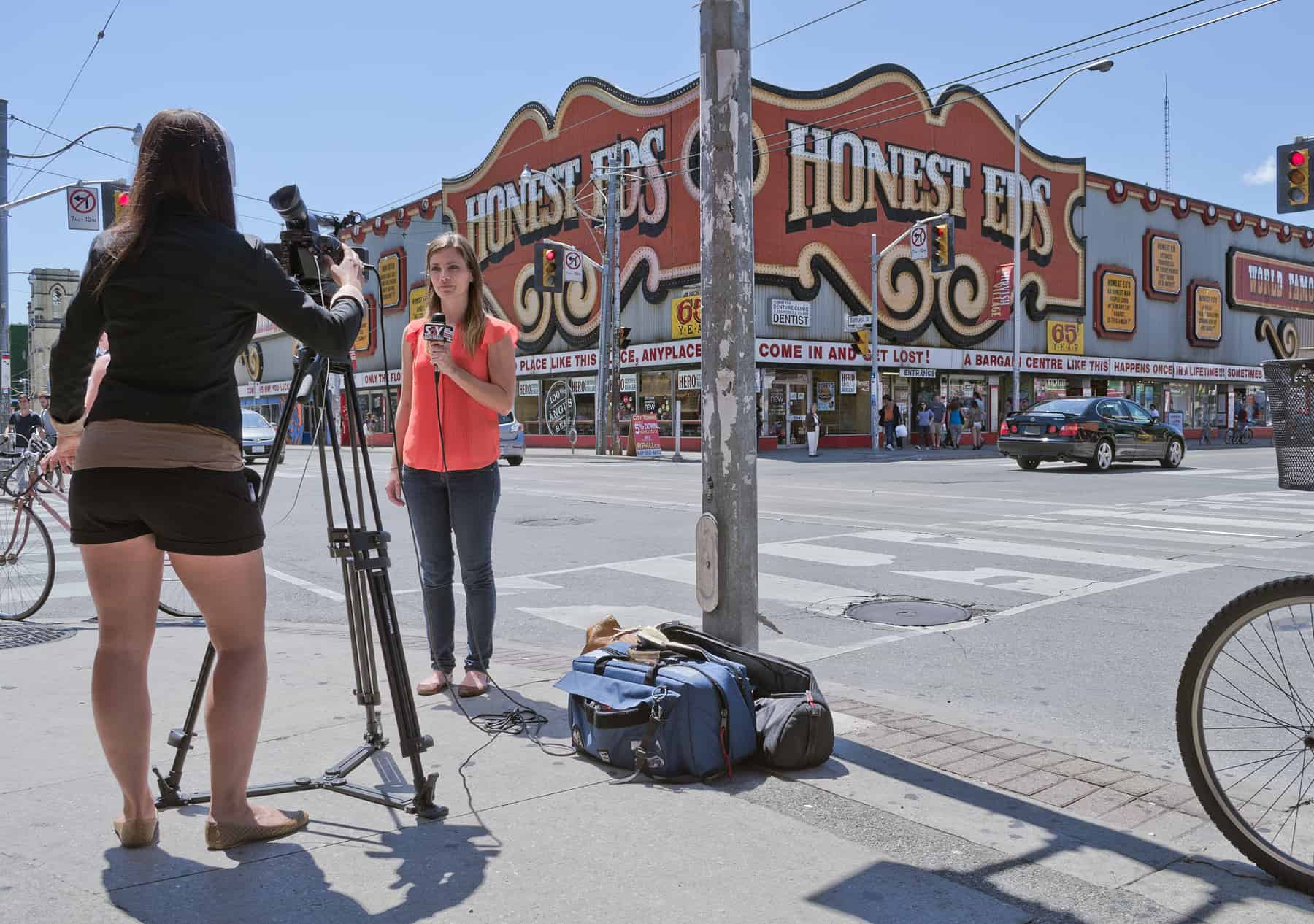Honest Ed Mirvish’s eponymous temple of thrift has presided over Bloor and Bathurst for sixty five years. Bargains at this local icon are grudgingly loved by many (loaf of bread for a quarter? Holographic howling-wolf print for $7.99?), and indeed, many rely upon them. So the city was shocked in July when David Mirvish, son of Ed, announced that both his family’s stake in the store and the surrounding area was up for sale. The unconfirmed asking price was reported by the Toronto Star to be $100,000,000.
Mirvish Village is so named because the late Ed’s investment in the neighborhood extended well past the gaudy dad-joke signs of Honest Ed’s (Ed attracts squirrels; at these prices, they think he’s nuts!) to encompass a small empire of seventy independent businesses and mixed-income residential units that has grown along Bathurst, Markham, and Lennox Streets.
Opinions about the future of this area fly back and forth. The sale could present an unprecedented opportunity for radical change of the area — including modernization and socioeconomic shift. Conversely, many fear the possibility of radical change. For decades, this rich community has housed and provided for Toronto students and locals of diverse backgrounds and circumstances. It is insular as many villages are, and it is fighting for self preservation just as rural towns on our periphery distrust the creeping suburban sprawl.
Owners of Mirvish Village shops have launched a petition to designate their three blocks a Heritage Conservation District similar to the nearby Harbord Village and East Annex; however, this area is much smaller and according to the City of Toronto’s website, is not under official consideration for conservation study.
Nevertheless, consciousness of preservation is key to successful development in any historic community. David Mirvish has been quoted as saying he hopes to see future development combining retail with residential building. Surely, a project like his three Gehry towers, soon to rise 80 stories high along King West, would never work in this less central site, but something rising from behind the flashing and likely-to-be-preserved Honest Ed’s marquee is inevitable.
One can only hope for something more inspired than what has become standard fare on every bare Toronto corner: a too-tall, too-featureless glass box of condos, built to a poor standard and sold at the high end of the bubble. While integrating housing into the site, a future developer should be careful of the neighborhood’s existing character, rather than mindlessly pushing gentrification.
Markham Street is a welcome respite to the garish Dollarama landscape of the nearby block. Behind a rapidly developing Bloor that has recently welcomed flashy international chains like Menchie’s and Jamba Juice, Mirvish Village has retained its independent character and provided affordable space for small, quirky businesses like jewellery studios and record stores to flourish. In fact, the traditional bay-and-gable homes of the area were initially developed as galleries by the Mirvishes when a demolition permit was denied. These businesses would now be hard pressed to find affordable space in such a prime location. Ideally, future development of the site will prioritize accessibility for small businesses that lack the scale to financially browbeat opponents into acquiescence.
Advocates of reinvention and preservation alike have nothing to fret about in the short term; councillor Mike Layton recently passed a one year freeze on retail development along Bathurst, including the Mirvish site. Furthermore, David Mirvish recently told the National Post that nothing has been sold — yet. We must hope that the asking price won’t put the more imaginative developers off of this amazing chance to influence the ongoing definition of our city.


